Sophisticated Energy Harvesting Systems and Energy Storage Solutions for Powering Wearable and Implantable Medical Devices
The evolution of wearable and implantable medical devices (WIMDs) has been nothing short of revolutionary, transforming healthcare delivery and patient outcomes. These devices, which include cardiac pacemakers, neural stimulators, continuous glucose monitors, and smart health trackers, offer continuous health monitoring, early disease detection, targeted treatments, and personalized medicine. However, the reliance on batteries for power has long been a limiting factor, necessitating periodic replacements that pose risks of surgical infections and inconvenience to users. The advent of energy harvesting and storage technologies offers a promising solution, enabling the development of self-powered WIMDs that can operate autonomously without the need for battery replacements.
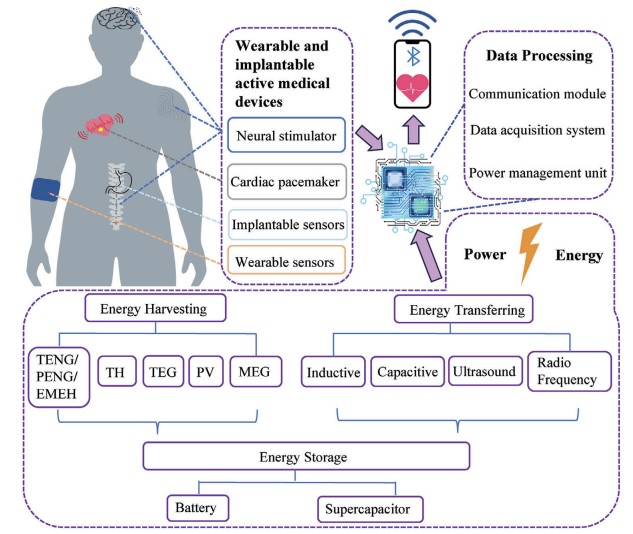 Fig.1 Illustration chart for a future vision where wearable and implanted medical devices, such as neural stimulators, cardiac pacemakers, and sensors, are self-powered, eliminating the need for battery replacements. (Gao Z., et al., 2024)
Fig.1 Illustration chart for a future vision where wearable and implanted medical devices, such as neural stimulators, cardiac pacemakers, and sensors, are self-powered, eliminating the need for battery replacements. (Gao Z., et al., 2024)
The Growing Demand for Self-Powered WIMDs
The global market for active wearable medical devices reached $27 billion in 2022, while the active implantable medical device market achieved a value of $22 billion. Combined, these markets are projected to reach $100 billion by 2025, underscoring the significant role of these devices in modern healthcare. Despite their benefits, current WIMDs rely heavily on primary or rechargeable batteries, which pose risks of surgical infections and inconvenience to users. Addressing this energy source challenge is critical for meeting the growing demand of the WIMD market. Recent advancements in energy harvesting and storage technologies offer a promising solution, enabling the development of self-powered WIMDs that can operate autonomously without the need for battery replacements.
Energy Harvesting Technologies: A Comprehensive Overview
- Triboelectric Nanogenerators (TENGs)
Triboelectric nanogenerators (TENGs) are a class of energy harvesters that convert mechanical energy into electricity through the triboelectric effect. TENGs are highly efficient and can be easily integrated into wearable and implantable devices. They have demonstrated significant potential in powering WIMDs. For instance, a symbiotic cardiac pacemaker using a TENG has been successfully tested in animal models, showing the ability to harvest energy from heart movements and maintain stable cardiac pacing. TENGs can also be used to power other implantable devices, such as neural stimulators and cochlear implants, by converting the mechanical energy of bodily movements into electrical energy.
- Piezoelectric Nanogenerators (PENGs)
Piezoelectric nanogenerators (PENGs) generate electricity from mechanical stress through the piezoelectric effect. They are particularly useful for harvesting energy from low-frequency movements, such as those of internal organs. Recent studies have shown that PENGs can be used to power cochlear implants and neural stimulators, offering a promising alternative to traditional batteries. PENGs can be integrated into wearable devices to capture energy from everyday movements, such as walking or arm movements, and convert it into electrical energy to power the device.
- Twistron Harvesters
Twistron harvesters are a type of electrochemical mechanical energy harvester that converts stretching motions into electrical energy. These devices have shown remarkable performance in generating power from small movements, making them suitable for implantable applications. For instance, twistron harvesters have been used to power cardiac pacemakers by converting the mechanical energy of heartbeats into electricity. Twistron harvesters can also be integrated into wearable devices to capture energy from movements such as walking or running, providing a continuous and reliable power source for WIMDs.
- Electromagnetic Generators
Electromagnetic generators convert mechanical energy into electricity through electromagnetic induction. While they are less efficient at low frequencies, recent advancements have led to the development of wearable electromagnetic generators that can harness energy from human movements. These devices can be integrated into clothing or worn as accessories to capture energy from everyday activities, such as walking or running, and convert it into electrical energy to power WIMDs.
- Thermoelectric Generators
Thermoelectric generators convert temperature differences into electrical energy. They offer a stable power supply by leveraging the consistent body temperature and the temperature differential with the external environment. Recent developments in flexible thermoelectric generators have shown promise in powering wearable and implantable devices. These generators can be integrated into clothing or implanted under the skin to capture energy from the body's heat and convert it into electrical energy to power WIMDs.
- Moisture-Driven Energy Generators (MEGs)
Moisture-driven energy generators (MEGs) generate electricity from the moisture gradient in the environment. These devices are simple to construct and can be made from low-cost materials. Recent studies have demonstrated the potential of MEGs in generating continuous electricity from atmospheric moisture, offering a sustainable energy solution for WIMDs. MEGs can be integrated into wearable devices or implanted under the skin to capture energy from the environment and convert it into electrical energy to power WIMDs.
- Photovoltaic Energy Harvesters
Photovoltaic (PV) energy harvesters convert solar energy into electricity. Flexible PV cells can be integrated into clothing or implanted under the skin to power WIMDs. While their efficiency can be affected by low light conditions, recent advancements have shown promise in improving their performance under indoor lighting. PV energy harvesters can provide a continuous and reliable power source for WIMDs, especially in environments with abundant sunlight.
Wireless Energy Transfer Technologies: A Promising Alternative
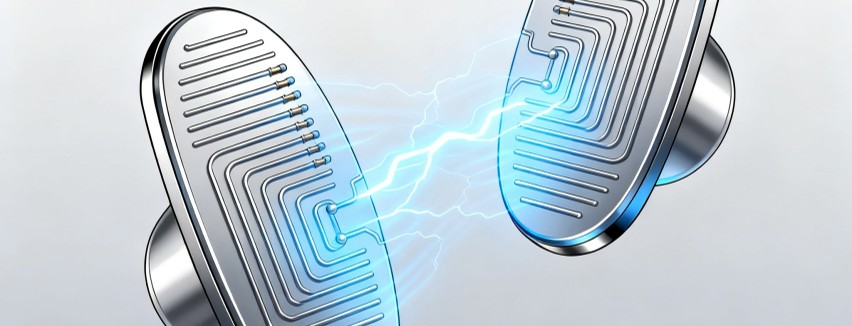
Inductive Power Transfer
Inductive power transfer (IPT) uses electromagnetic induction to transfer power wirelessly between two coils. This technology is widely used for short-range power transfer and has been successfully applied in powering implantable medical devices. Recent studies have demonstrated the use of IPT in powering cardiac pacemakers and neural stimulators, offering a reliable and efficient power source for WIMDs.
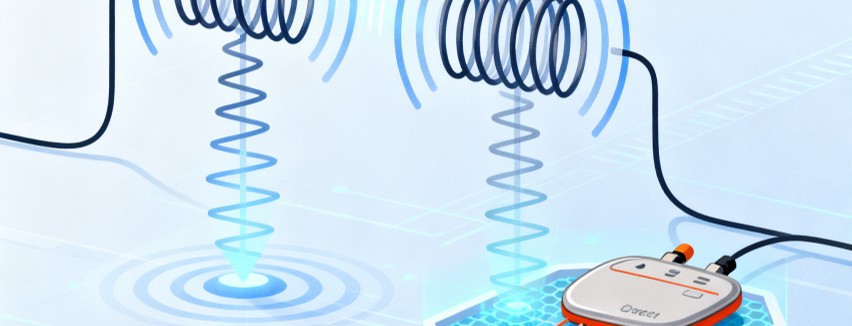
Capacitive Power Transfer
Capacitive power transfer (CPT) uses electrostatic induction to transfer power between two conductive plates. This technology offers higher misalignment tolerance compared to IPT and has been used to power subcutaneous implants. Recent advancements have shown promise in reducing the size of CPT devices while maintaining their power transfer performance, making them suitable for a wide range of WIMDs.
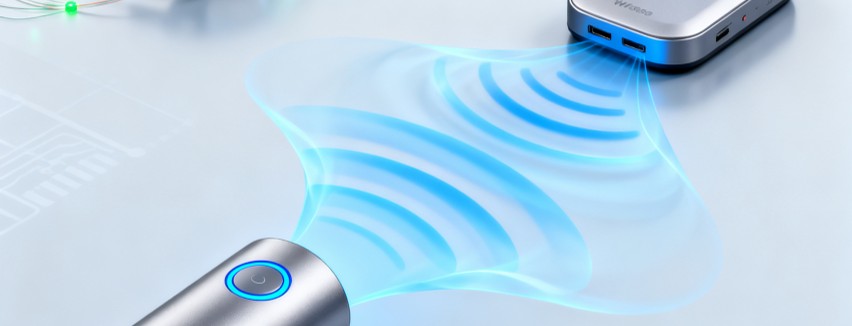
Radio Frequency Wireless Power Transfer
Radio frequency (RF) wireless power transfer uses RF signals to transfer power wirelessly. This technology can transmit energy over longer distances and does not require precise alignment between the transmitter and receiver. Recent studies have demonstrated the use of RF power transfer in powering optogenetic devices and spinal cord stimulators, offering a versatile and efficient power source for WIMDs.
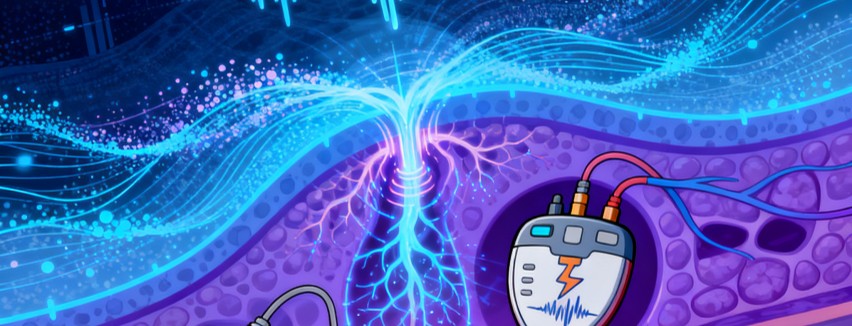
Ultrasound-Induced Power Transfer
Ultrasound-induced power transfer uses ultrasonic waves to transfer power wirelessly. This technology offers deep penetration and high safety for biomedical applications. Recent studies have demonstrated the use of ultrasound-induced power transfer in powering neural stimulators and cardiac pacemakers, providing a reliable and efficient power source for WIMDs.
Energy Storage Solutions: Ensuring Continuous Power Supply
Flexible Supercapacitors
Flexible supercapacitors offer superior power densities compared to traditional batteries and excel in energy storage through mechanisms like ion adsorption and rapid surface redox reactions. They are ideal for medical applications due to their improved safety, quick charging and discharging, and longer lifespan. Recent advancements have shown promise in developing flexible supercapacitors with high energy densities, making them suitable for powering WIMDs.
Rechargeable Batteries
Rechargeable batteries, particularly lithium-ion batteries, are the primary choice for WIMDs due to their high energy density and stable performance. Recent advancements have focused on developing smaller, safer, and more efficient batteries for medical applications. For example, zinc-ion batteries have gained popularity as a sustainable and safer alternative to lithium-ion batteries, offering a promising solution for powering WIMDs.
Challenges and Future Opportunities
- Energy Harvesting Efficiency
Current energy harvesters produce power densities that are insufficient to meet the demands of high-energy-demand devices like neural stimulators. Improving the efficiency of energy harvesters is crucial for their widespread adoption. Strategies to increase energy harvesting efficiency include optimizing material properties, improving device design, and reducing system energy loss.
- Long-Term Biocompatibility and Safety
Wearable and implantable energy harvesters must be biocompatible and safe for long-term use. Ensuring the biocompatibility of materials and preventing adverse reactions within the body are critical challenges. Recent advancements have focused on developing biocompatible materials and assessing the long-term performance and safety of implants.
- Device Functionality
Most energy harvesters produce alternating current (AC) outputs, which require rectifiers to convert to direct current (DC) for powering WIMDs. Developing energy harvesters that produce DC outputs directly would significantly improve their efficiency and applicability. Additionally, improving the controllability of energy harvesters to meet the specific needs of medical devices is another area of ongoing research.
- Hybrid Energy Harvesting Devices
Integrating multiple energy harvesting technologies into hybrid devices can provide a continuous and reliable power source for WIMDs. However, designing hybrid systems that work synergistically remains a significant challenge. Recent advancements have shown promise in developing hybrid energy harvesters that combine different mechanisms to harness diverse energy sources.
- Standardization
Establishing standardized testing protocols and performance metrics is essential for advancing the field of energy harvesting. Standardization will ensure consistency in data and facilitate the integration of diverse systems. Recent efforts have focused on developing comprehensive frameworks for measuring and comparing the outputs and efficiencies of energy harvesters.
Conclusion
The development of energy harvesting and storage technologies represents a significant step forward in the quest for self-powered WIMDs. While challenges remain, recent advancements in material science, device engineering, and wireless power transfer offer promising solutions. By addressing the challenges outlined in this article, we can envision a future where wearable and implantable medical devices are entirely powered by the human body or the surrounding environment, improving patient outcomes and revolutionizing healthcare.
If you have related needs, please feel free to contact us for more information or product support.
Reference
- Gao, Ziyan, et al. "Advanced energy harvesters and energy storage for powering wearable and implantable medical devices." Advanced Materials 36.42 (2024): 2404492.
These products and services are for research use only and cannot be used for any clinical purposes!



 Fig.1 Illustration chart for a future vision where wearable and implanted medical devices, such as neural stimulators, cardiac pacemakers, and sensors, are self-powered, eliminating the need for battery replacements. (Gao Z., et al., 2024)
Fig.1 Illustration chart for a future vision where wearable and implanted medical devices, such as neural stimulators, cardiac pacemakers, and sensors, are self-powered, eliminating the need for battery replacements. (Gao Z., et al., 2024)


